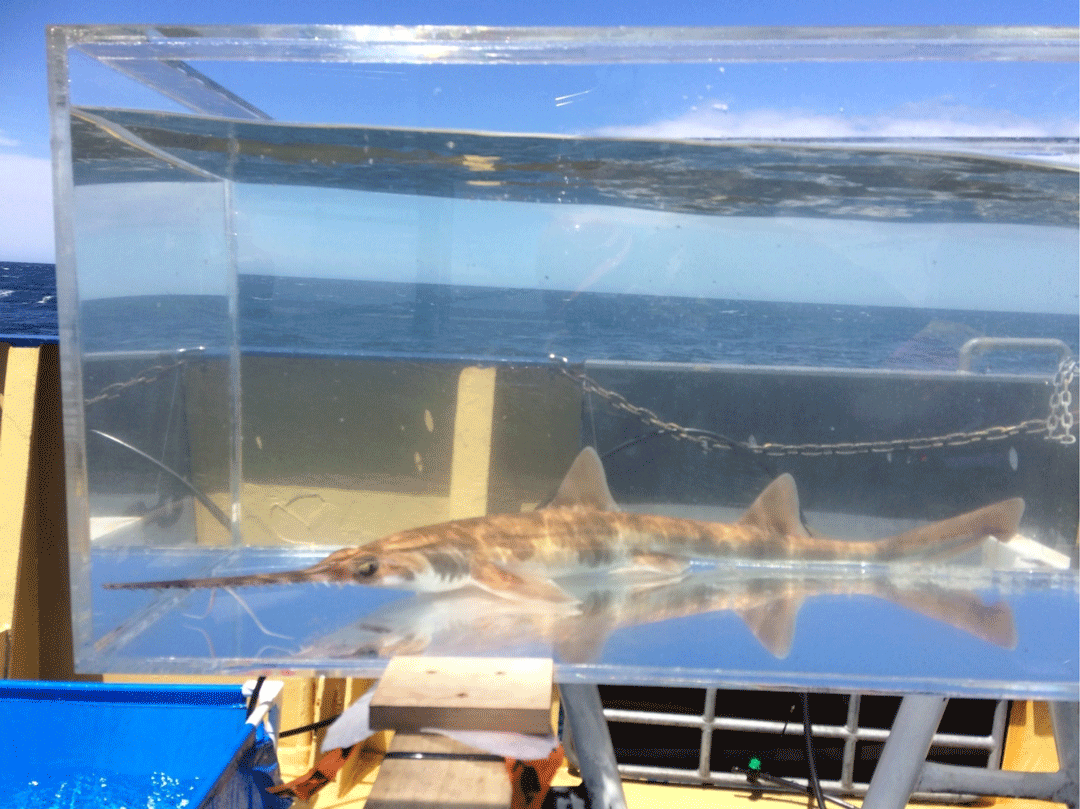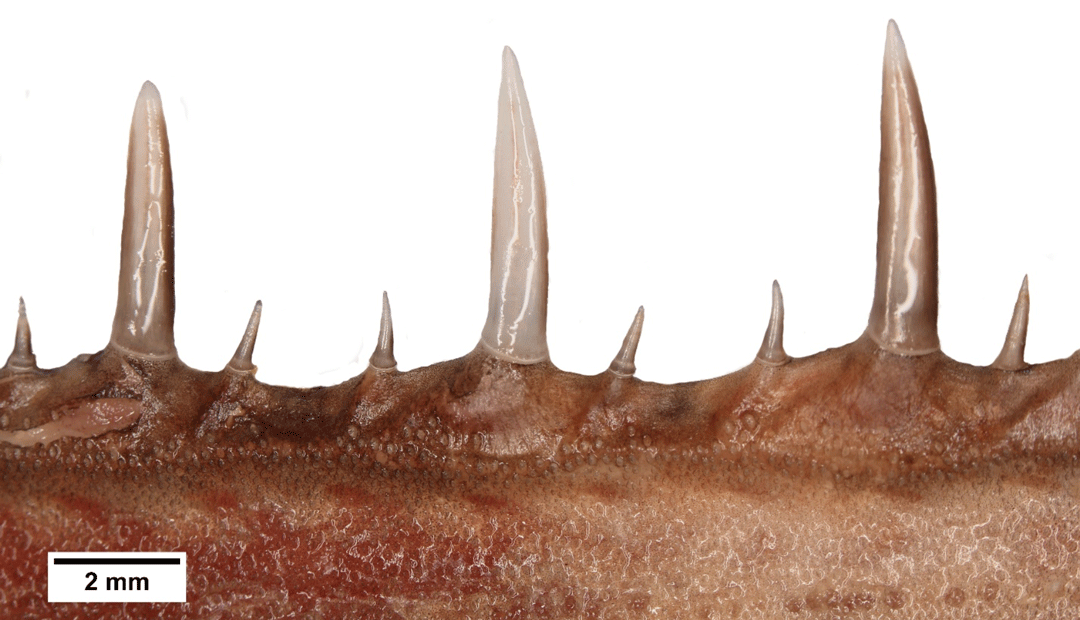The cutting edge of sawshark research
Fish come in all sorts of shapes and sizes, including sharks. The scope and scale of the diversity of morphology found in sharks is a truly impressive mix of form and function. One of the more unusual examples of this can be seen in the sawsharks (Pristiophoriformes). Often mistaken for sawfish (Pristidae) due to commonalities in their rostrums, sawsharks differ from sawfish in that they are true sharks. This is a great example of convergent evolution or when two structures evolve independently but appear to be similar in structure or function. The rostrum in sawsharks is unique in that it has a pair of ‘barbels’ that occur approximately halfway down. Additionally, the rostral teeth are quite distinct, alternating in size along the edge of the rostrum. Unlike sawfish these teeth are replaceable.

This photo shows a common sawshark recovering in an aquarium aboard the TV Bluefin. Photo © Jane Williamson.
There are eight currently recognized species of sawsharks. Despite occurring across the world’s oceans, sawsharks are one of the most poorly understood groups of sharks. In general, they are small (<150 cm) benthic mesopredators that occur on the continental shelf and slope. Some species occur down to approximately 1,000 meters depth. In Australia, we have three endemic species: the tropical sawshark (Pristiophorus delicatus), the common sawshark (P. cirratus) and the southern sawshark (P. nudipinnis). The tropical sawshark occurs in waters off Queensland in northeastern Australia. The common sawshark occurs in waters from southern Queensland, down the eastern coastline to the west coast of Australia, including Tasmania. The southern sawshark has a more restricted distribution that centres around southeastern Australia.
The common and southern sawsharks are regularly caught as by-catch through a variety of commercial fishing methods such as trawling, gill netting and longlining. Although sawsharks have been caught since the early 1900s, the majority of sawshark research has been conducted by the Marine Ecology Group at Macquarie University in Sydney, Australia. This research group, led by Jane Williamson, has explored aspects of their biology, morphology, trophic ecology and fisheries catch.
To date, sawshark research in the Marine Ecology Group has been completed by a number of students. We have assessed historical CPUE data from a collection of commercial and scientific fishery data sets to determine where they occur. We have found that sawsharks occur at shallower and deeper depths than previously thought. Through preliminary genetic analysis, we also know that population structure of the two southeastern sawshark species differs.
Ecologically, researchers in the Marine Ecology Group have conducted an introductory investigation into the diets of the common and southern sawsharks. Stable isotope and stomach content analyses showed that these sharks feed at different trophic levels, with the common sawshark feeding on primary consumers and southern sawsharks maintaining a primarily piscivorous diet. We have also examined the anatomy of the barbels and microwear (scratch marks) on the rostral teeth to understand how sawsharks could use them.

Up-close image of rostral teeth of a common sawshark. Photo © Ryan Nevatte
We still face substantial knowledge gaps in our understanding of both species, which are important for any meaningful management or conservation efforts. Research funded by the Save Our Seas Foundation will continue this research on the southern Australian species with an ultimate aim of filling these knowledge gaps for these demersal sharks and allow us a greater understanding of their ecological roles.
